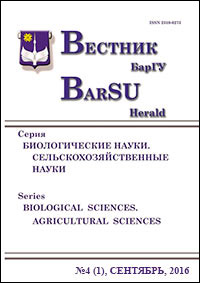ON EXCEPTIONALLY WELL PRESERVED PALEOZOIC TABULATE CORALSREDEPOSITED IN PLEISTOCENE SANDS OF BELARUS
Keywords:
Paleozoic Tabulata corals, redeposition, Pleistocene, fast shore ice raftingAbstract
Redeposited Paleozoic (mainly Ordovician and Silurian) Tabulata corals are widespread in Pleistocene sandy-argillaceous deposits
of Belarus. The nearest Ordovician and Silurian exposures that could be considered as their source rocks are confined to the northern part
of Estonia and several islands of the Baltic Sea. Some specimens in the collected material are represented by loose colonies preserved in
fine detail. Being completely or mainly free of enclosing Paleozoic rock, they show almost no sign of chemical weathering or any visible
damage caused during natural etching by acidic ground waters, which allows to eliminate acid dissolution as the mechanism of their
natural separation from Paleozoic carbonate boulders. The specimens are very fragile and are characterized by negligible resistance to
mechanical destruction. This does not support the hypothesis of glacial plucking and subsequent transportation of this material during
advancement of Pleistocene Scandinavian glaciers widely accepted in most publications as the background hypothesis for explaining the
delivery of boulders and pebbles into Pleistocene deposits. One should also take into consideration that in many published sources it
is thought that glacial transportation was accompanied by the mechanical grinding of rock debris, which should demolish any fragile
material by the mixture of boulder, pebble and gravel sediment. Instead, in the present paper the shore-fast ice delivery hypothesis is
thought to be more consistently applied to the studied material. The shore-fast ice rafting hypothesis contradicts the glacial theory and
has been proposed by some authors as one of the alternative explanations of erratic material delivery. According to direct observations
on modern Arctic seashores, it involves an alternation of seasonal incorporation into ice of the near-surface bottom sediment and debris
in the littoral zone and its subsequent transportation by floating ice. If this assumption is correct, loose fragile coral skeletons could be
used for paleogeographic reconstructions as indicators of a probable Late Cenozoic Sea flooding area.
Fig. 2. Ref.: 18 titles.
Downloads
Published
Issue
Section
License
Copyright (c) 2023 Вестник БарГУ Серия "Биологические науки. Сельскохозяйственные науки"
Это произведение доступно по лицензии Creative Commons «Attribution-NonCommercial» («Атрибуция — Некоммерческое использование») 4.0 Всемирная.
Авторы сохраняют за собой право заключать определенные договорные соглашения, касающиеся неисключительного распространения опубликованной версии работы (например, размещать ее в институциональном репозитории, публикация в книге) со ссылкой на ее первоначальную публикацию в этом журнале.





